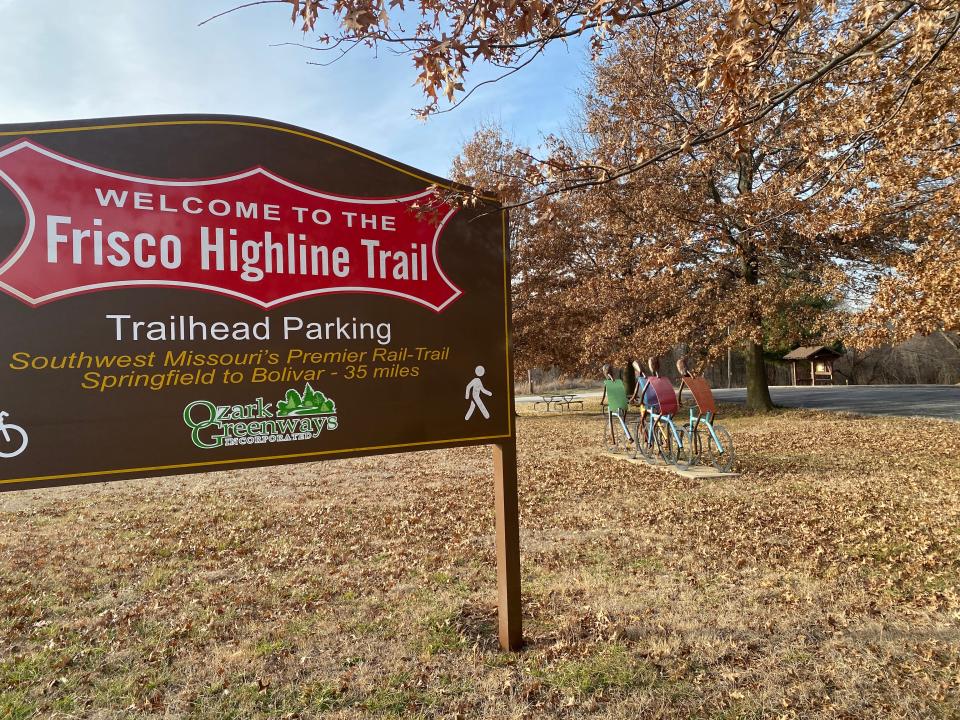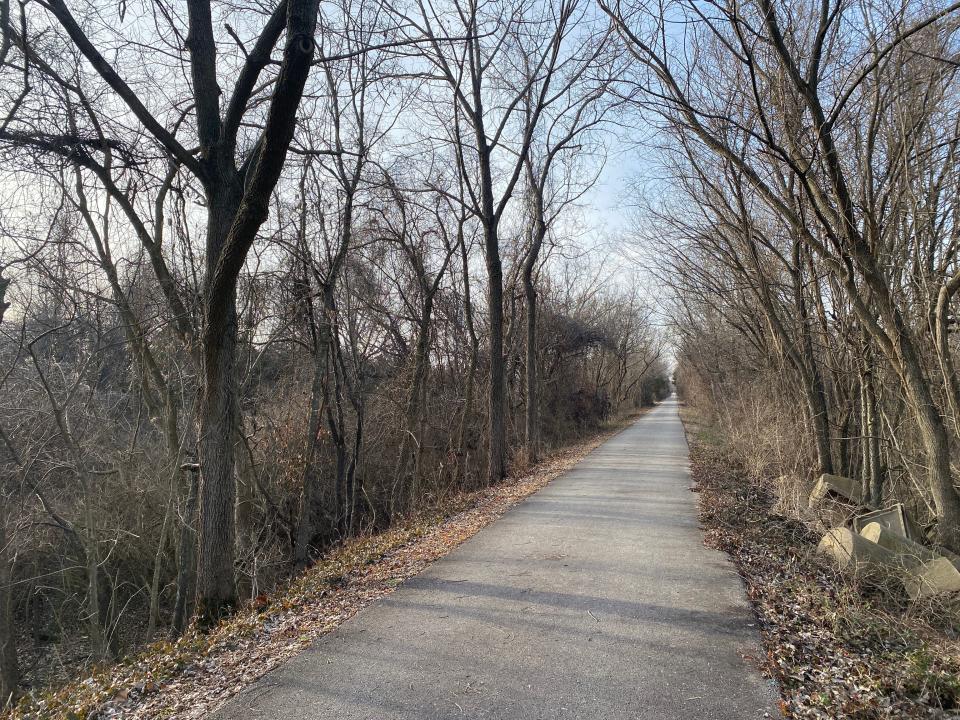New multistate cycling trail to extend through the Ozarks, connect Louisiana to Minnesota
A new designated cycling route will connect Louisiana all the way up to Minnesota — and come right through the Ozarks. Stretching across five states, the route will have stops in Joplin, Springfield, Willard, Ash Grove, Walnut Grove and continue on to Bolivar, Warsaw, Sedalia and the northwest of the state.
The plans to designate the route as U.S. Bike Route 51 have been in the works for years by the Missouri Bicycle and Pedestrian Federation and Adventure Cycling Association, a national nonprofit. A process that requires each state to apply for federal designation is lengthy and requires support from each local jurisdiction that oversees a portion included in the route.
This is a "no construction" project. Rather, the route would designate existing trails and roads as an official cycling route to be added to a map of long-distance nationally designated routes, particularly focusing on roads with lower volume traffic that are more suited for cyclists. From the Arkansas border to the Iowa border, the route in Missouri will span over 640 miles, including a 90.8-mile-long alternate USBR 251 directly from Bella Vista to Springfield.
What is expected in the Ozarks?
The Ozarks are already home to two other U.S. Bicycle Routes — Route 66 and Route 76, also known as the TransAmerica Trail. Both of these, as well as other statewide routes, run east to west. USBR 51 will be one of the first to run south to north in Missouri, bringing opportunity to create a larger network.
"Missouri is kind of a trail or bicycle routes nexus for the country," said Brent Hugh, executive director of Missouri Bicycle and Pedestrian Federation. He said putting together Route 51 was fairly easy because of the already established cycle-friendly infrastructure a lot of communities have.

The new route will intersect USBR 76, which runs just north of Springfield, on the Frisco Highline Trail in Walnut Grove, a 35-mile-long trail connecting Springfield to Bolivar. USBR 51 will connect with multiple state trails including the Razorback Trail, the Katy Trail and the Rock Island Trail.
Executive Director of the Ozark Greenways Mary Kromrey said it's exciting to have infrastructure like the Frisco Highline Trail in place to give cyclists who may be travelling across the country a break from having to be as vigilant about cars during portions of the route that may utilize streets.
David Hutchison serves on the USBR 51 Planning Committee for the Missouri Bicycle and Pedestrian Federation and has been particularly focused on the southwest portion of the state. He said through the work of putting the route together for the past three years, he has not heard any negative feedback.
Signage is not a requirement for the designation. It would be up to each town, local agency or state to put up signs of the designation if they choose to do so after the route is officially named. Kromrey said the Ozark Greenways will likely add signage to indicate the Friso Highline Trail is a part of the route, but signs are not vital. She said just like with cars and GPS technology, cyclists often rely on apps to provide step-by-step navigation for their travels.
Hugh said they will look into applying for funds to make signage possible for the entirety of the route in the state.
The entire Missouri portion of the route would take about a week to complete for cross-country cyclists or about 2-3 weeks for more recreational cyclists. The loop from Springfield to Bella Vista to Joplin and back to Springfield would take about 2-3 days for endurance cyclists or a week for more leisurely bike riders.
Taking the scenic route
The route is more than just getting from point A to point B, and not built necessarily for the straightest or most efficient way to cross the state. The route combines travel, nature and history.
Kerry Irons, volunteer coordinator at the Adventure Cycling Association, said the scenery and existing bicycle infrastructure in western Missouri provide for good bike travel.

As the route runs through historical areas like the Butterfield Stage and Lewis and Clark Trail, USBR 51 is an opportunity to explore Missouri and its small-town charm.
"What it does is takes you places that you might want to go, or you might want to visit," Hugh said. "So it takes you to five dozen towns that each have their own history and personality and things to see and do."
For small towns, being along a nationwide bike route can be an opportunity for economic development and a low-impact form of tourism. Irons said the average cyclist spends about $150-200 per day, which across a week of travel can bring in a lot of dollars that can make a large difference for small communities.
"It's very important that Missourians have choices and options to explore their state and their country, and why not from the seat of a bicycle?" Kromrey said. "I think you can really get a feel for an area and a region and the folks that call that place home if you slow down a bit and go exploring on your bicycle."
Expectations for completion
Irons said designation is done on a state-by-state basis, meaning each state's department of transportation must apply for federal designation. The biggest obstacle to this is garnering support from each local entity and convincing the DOTs to be on board.
The Adventure Cycling Association provides technical support to the American Association of State Highway and Transportation Officials, which means the legwork to designate bike routes is done mostly by volunteers and does not require much bandwidth or staff hours from state DOTs.
More: New Chadwick Flyer Trail, expected to cost $20M, coming in next 5-10 years
In Missouri, Irons said support from about 85% of the local jurisdictions along the routes has already been secured. He is hopeful the remainder will be complete in time to meet the federal application deadline in mid-March. Missouri and Arkansas will be first to receive the designation for USBR 51.
Currently, Hutchison said the work is focused on the northern portions of the state along the route, in hopes of having every locality's support letters by the end of the month.
Hugh said once the application is turned in, official designation can be expected sometime in summer. As for the entirety of the route, Irons said there is no current timeline for completion.
"It's kind of a no-brainer, in a sense, like it's a thing that is using existing roads and trails and facilities, facilities we already have, and it's bringing extra value to them basically, at really no extra cost," Hugh said.
Marta Mieze covers local government at the News-Leader. Contact her with tips at [email protected].
This article originally appeared on Springfield News-Leader: New national cycling route will run through Ozarks, entire state

